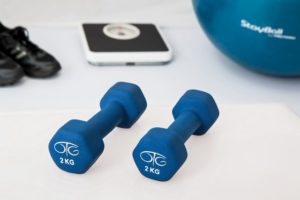What The Fitness Industry Will Look Like In The Future

Digital fitness
It’s an exciting time to be involved in the fitness industry. The future of fitness is shaping up to be a truly interactive experience, thanks to the proliferation of online technology. From anywhere in the world, you can compete with others in your community or across the globe and measure your progress as you go. You can connect with personal trainers via video chat, have virtual fitness classes with friends, share your goals and cheer each other on through social media, and so much more. Here are just a few of ways that digital fitness is changing the way we work out:
Wearable technology will become more personalised
You already know that wearables are becoming more and more popular. But, as we move forward, many experts predict that the technology will become even more helpful.
To start with, improvements in biometrics will allow us to get a lot more accurate data on heart rate and calorie burn—the current industry standard for measuring activity levels. If you’re not up on your smartwatch jargon, “biometrics” refers to the ability of a device to recognise physical characteristics like fingerprints and retina patterns. This kind of tech is going to make it easier for wearable devices to get an exact read on things like stress level and hydration needs. It’ll also likely help wearable manufacturers create gear that can differentiate between different users—so one day you might be able to share your FitBit with, say, your sister-in-law without worrying about confusing each other’s stats!
Sensors will detect your progress
Sensors are a part of our lives now, whether we notice them or not. Your phone has a sensor to track your movements and use that information to provide you with accurate GPS location services.
A motion-sensing device above your front door will turn on your porch light when it detects movement. There are even sensors that can be placed at the entrance of a store so that when you walk in, the lights will turn on and music will start playing. Technology is moving fast, and the fitness industry is taking advantage of the developments in this area to help people achieve their fitness goals.
Gyms are using special sensors to track members’ progress. With kits such as those offered by GymAware, coaches and trainers can get an accurate measurement of how much force was exerted during each workout rep and how many reps were completed in total. In addition, although data analysis is still in its infancy, soon gyms may also be able to give feedback based on measurements taken from members’ biometric data (such as heart rate) while they’re working out!
These capabilities allow personal trainers more effectively measure clients’ activity levels without having direct contact with them every day all year round – which increases efficiency for both parties involved (they want better service too!).
At home you can use the same technology for tracking progress through gadgets like Fitbit or Apple Watch. But what if there were something more advanced?
You could set up an app to check yourself against previous workouts based on one-rep maxes per muscle group; see where you’re currently at compared with last week’s results; receive recommendations like what types of foods best compliment certain training regimens; or even get personalized nutrition plans specific for optimal performance through different workouts! The possibilities here seem endless!
With all these things going into play right now – it’s really just exciting where we’ll end up! It’s clear though that success hinges heavily upon knowing what smart devices they make available today while keeping in mind those yet developed tomorrow
Virtual reality and augmented reality
Imagine training for a marathon in an indoor track, but the scenery around you flashing from New York City to Paris to Tokyo to Rome at an interval of every quarter mile. The sky is always blue, there’s no traffic or potholes to worry about, and you can tune out all other distractions as your personal trainer cheers you on from a screen beside you.
What if instead of running a road race, you were swimming across the English Channel? Or biking up a mountain? Or rock climbing in Yosemite National Park? All of these experiences could become possible through the use of virtual reality and augmented reality technology. This technology will allow fitness professionals to simulate real world environments or even create entirely new scenarios so that they can provide their clients with more engaging and interactive workout experiences that can help them reach their goals in less time and with less risk than ever before.
Technology-free fitness experiences

The trend toward technology-free fitness experiences will continue, as will the use of tech in the fitness industry. The two are not mutually exclusive. The basics are best, but technological innovations will continue to evolve and expand.
The basics are best
If you’re motivated by the latest fitness fad, there’s nothing wrong with that—as long as it works for you and makes it easy to stay active. But the truth is, your best bet might be a simpler system.
The truth is, in order to really benefit from a fitness routine, it has to be something you enjoy doing on a regular basis. And while high-tech equipment can certainly help make workouts more engaging—and maybe even encourage people who wouldn’t usually exercise to give it a try—technology isn’t always the best way to keep fit. The most sustainable fitness plans are the ones that are flexible enough to fit in with your lifestyle.

We will see an increase in the use of technology to improve fitness
The use of technology for fitness is expected to see significant growth in the future.
You’re probably already aware that technology can be used to track personal goals, measure success and build motivation. Using a smartwatch makes it easier to monitor heart rate, track steps and workout routines etc. But how else will smart devices impact this industry?
It’s likely that we’ll see an increase in apps and software which allow users to create personalized training programs. Many trainers are already using this principle, but increasingly data-driven tools will help provide valuable feedback on how the body is responding to activity.
Another popular trend is the ability to join virtual classes from anywhere with an internet connection! Whether you’d like to join a live session or watch a pre-recorded video from your favorite instructor – this offers more flexibility for busy lives.
For more informative and educational content don’t forget to visit us here!
